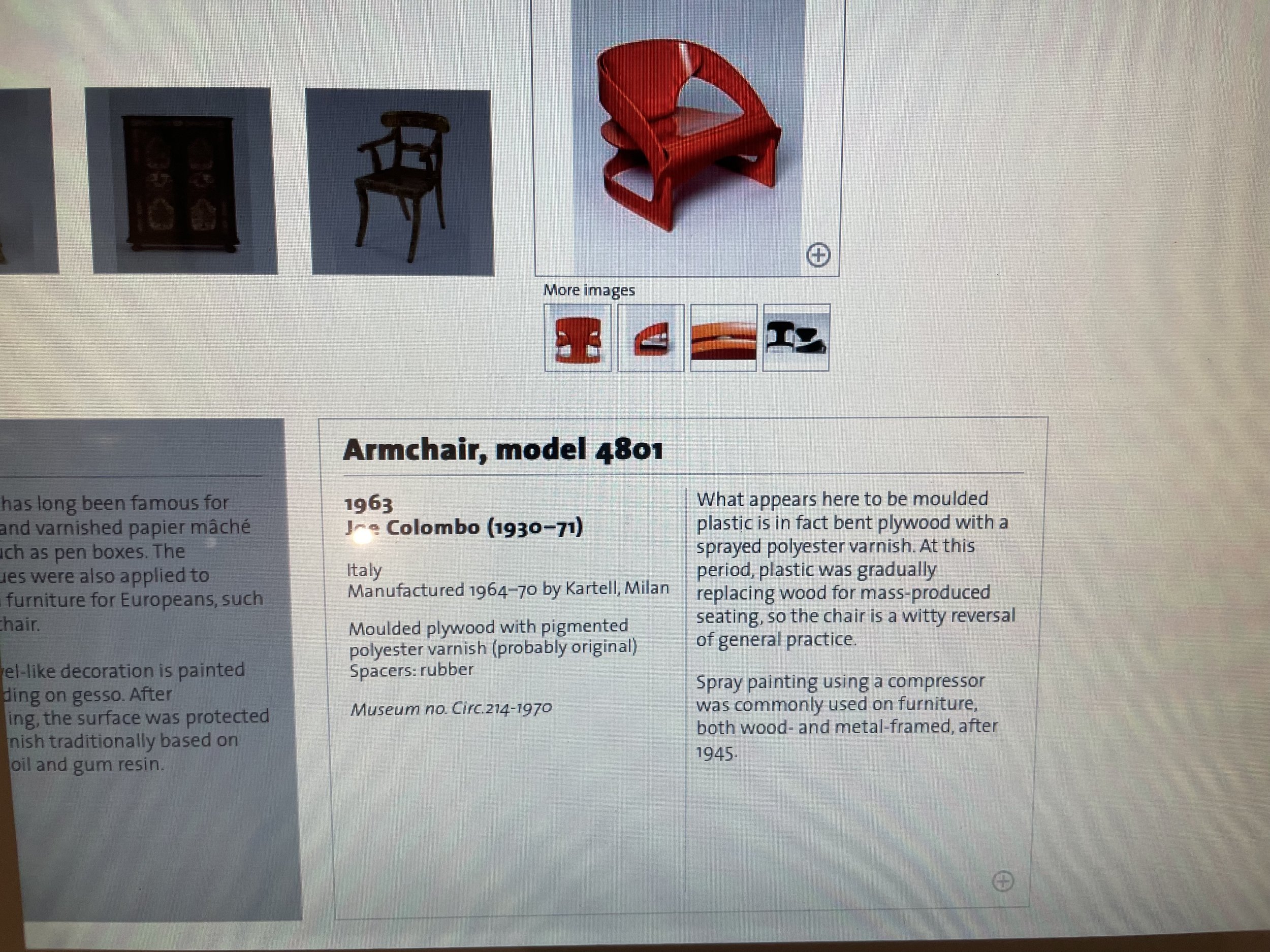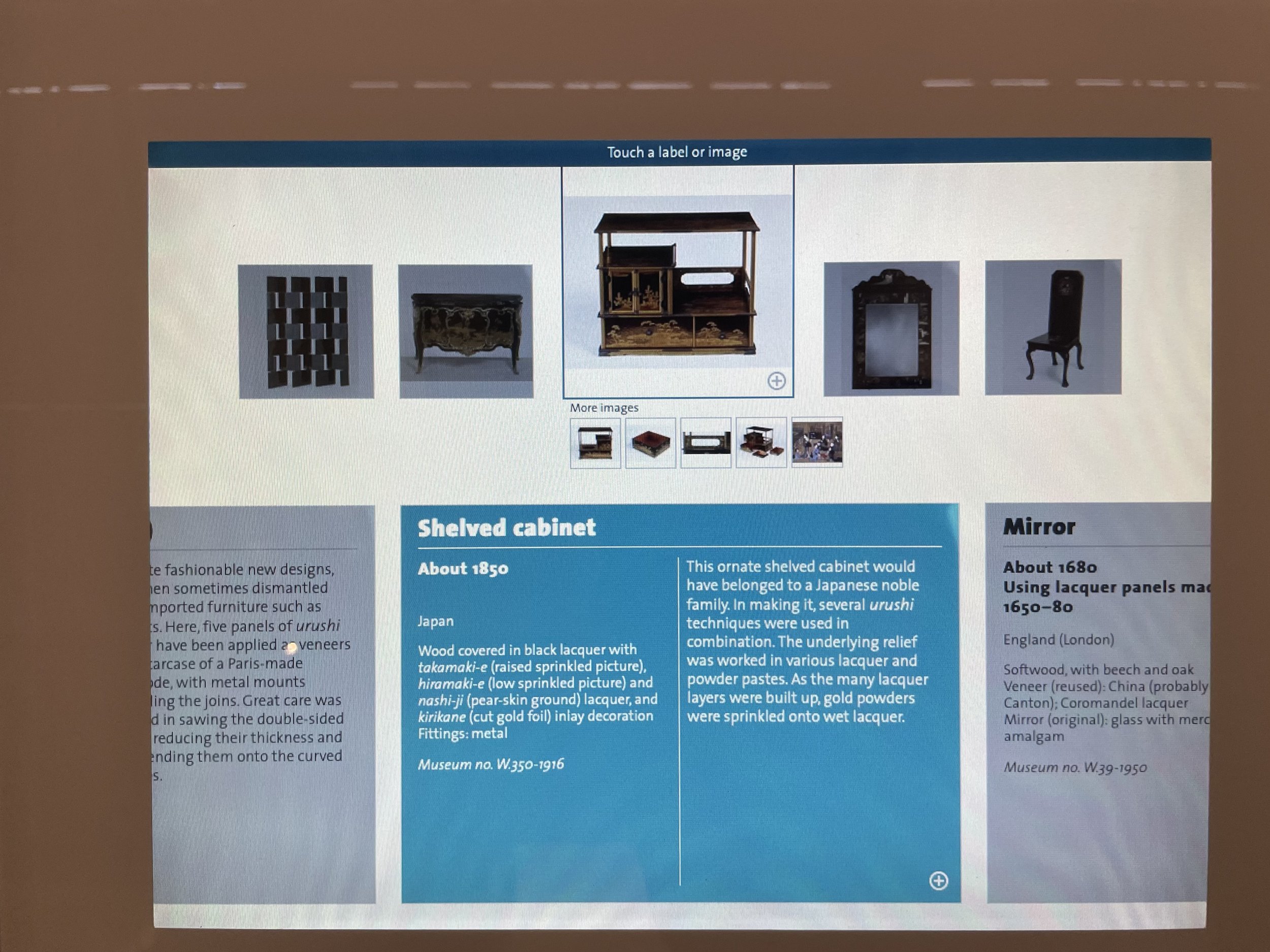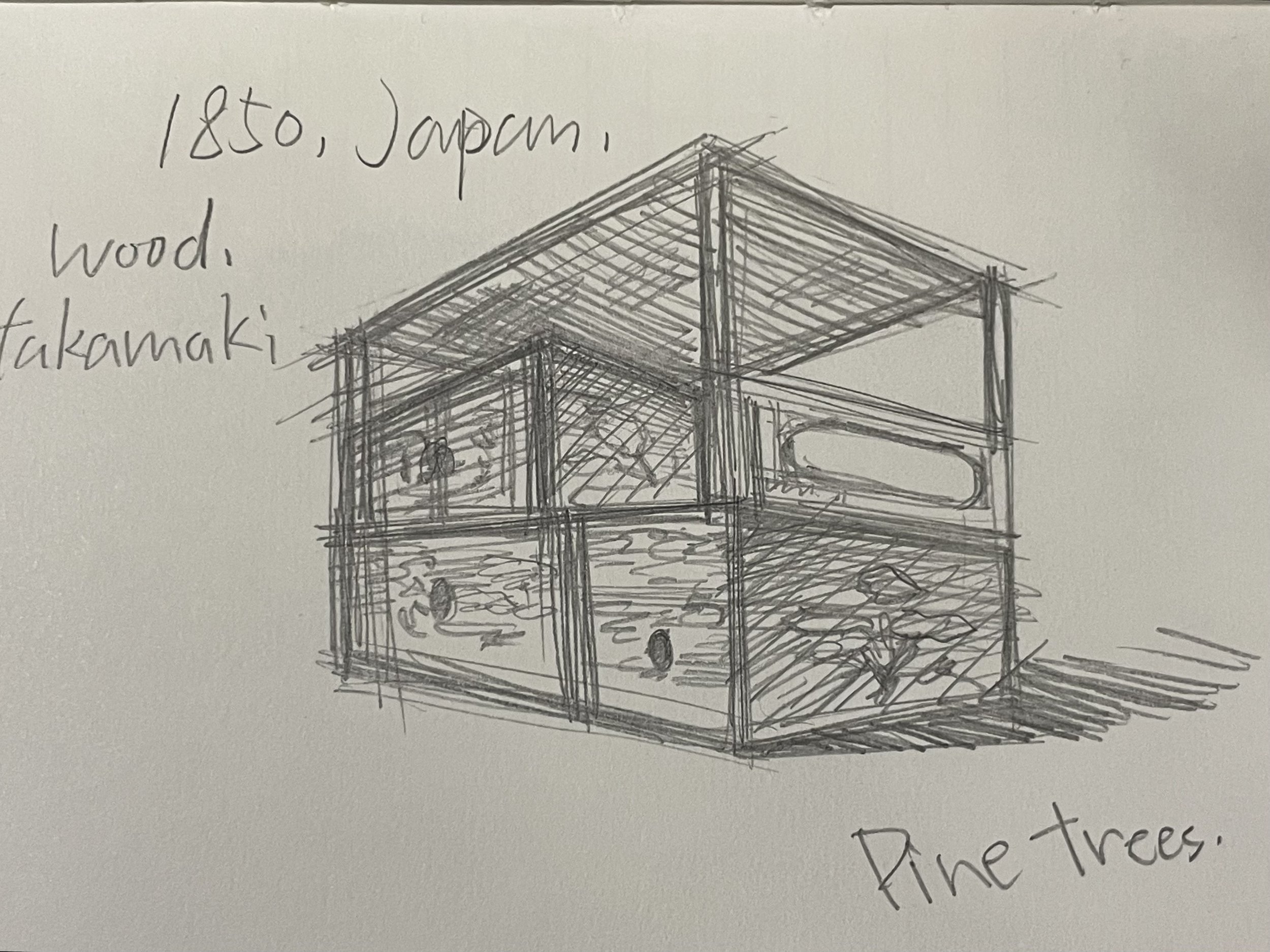V&A tour
Last week's study trip to the V&A Museum in London offered an unexpected yet profoundly enlightening experience. Initially, I was puzzled when Simon, our tutor, insisted we bring our sketching tools. My previous visit to the museum had been a brief, cursory walk-through, leaving me with no particularly strong impressions. However, this trip promised something more immersive and engaging.
Upon gathering at the museum, we headed straight to the Furniture Gallery. This unique space, both narrow and elongated, displayed an array of furniture from diverse locations and eras. The variety was astonishing, each piece telling its own story of design and craftsmanship.
Our guide for the day, Nick, a knowledgeable staff member, provided us with invaluable insights. He delved into the background of each furniture piece, covering aspects such as materials used, the evolution of forms, and historical contexts. This information was not just informative but also instrumental for our sketching activity.
As we set out to sketch, I realized the true purpose of this exercise. It wasn't merely about capturing the physical form of the furniture on paper. Instead, it involved a deeper engagement with the pieces in front of us. I found myself observing intricate details, understanding the interplay of form and function, and appreciating the historical journey of each design. This hands-on approach transformed my perception of the exhibits from mere objects to embodiments of art and history.
V&A Museum
Armchair, Joe Colombo, 1963
At first, I had no clear purpose for furniture. I just picked random objects and sketched them when I wandered around the gallery. I treated it as a sketch practice.
Japanning
Then a particular section captivated my attention: Japanning. This exhibit showcased a time in European history when fascination with Oriental arts, such as Ukiyo-e and Chinese ceramics, was at its peak. Renowned artists like Monet integrated these artistic styles into their work, reflecting a genuine appreciation for Far Eastern art forms. This period of cultural exchange was marked by a sense of wonder and curiosity, as European societies, still relatively isolated, had limited exposure to Eastern cultures. Such limited interaction lent an air of mystery to Eastern artworks, fueling the imagination of Western artists.
However, my understanding of this cultural exchange is deeply influenced by Edward Said's theory of Orientalism, first introduced in 1978. Said's viewpoint, which I resonate with, suggests a nuanced and sometimes problematic interpretation of the East by the West. As the world has grown more interconnected, I've observed a shift in Western attitudes towards Eastern cultures. There seems to be a tendency to overlay Western values onto 'Oriental' themes, often leading to misrepresentation and stereotypes, particularly evident in mainstream Hollywood productions. As an Asian, I often find a disconnect with such portrayals, noticing a predominance of Western perspectives in Eastern settings.
This historical context provided a unique lens through which I viewed the Japanning furniture. As I sketched, I sensed a contrast between the sincerity and authentic appreciation in these historical pieces and the contemporary interpretations of 'Oriental' art by Western creators. The Japanning collection seemed to capture a moment in time when the fascination with Eastern art was more about discovery and admiration, rather than appropriation or misunderstanding.
My exploration in the Japanning section became a reflective journey, pondering the evolution of cultural interactions and perceptions over time. It underscored a desire to delve deeper into the European reception of Oriental art in its early days, seeking to understand the roots of this complex intercultural dialogue.
Shelved cabinet, Japan, about 1850
Shelved cabinet, Japan, about 1850
Cabinet, England/Germany, 1735
Cabinet, England/Germany, 1735
Cabinet, England/Germany, 1735
In the afternoon, our group dispersed to explore various sections of the V&A Museum more independently, each pursuing our own interests. I navigated through numerous galleries, drawn to the cultural and geographical stories behind each object. This exploration turned into a fascinating journey, revealing how the same object can vary dramatically in appearance and form across different regions, each variation offering a window into local cultures and the influences shaping them.
One striking example was the Buddha statues. I observed how their forms varied significantly depending on their geographical origins. The Buddha statues from Gandhara, for instance, bore a remarkable Greek influence, a legacy of Macedonia's rule in the region. These statues exhibited a keen attention to realistic details in hair and clothing, distinctly different from those found in China and Southeast Asia. In China, the Buddha statues mirrored local artistic traditions, particularly influenced by Daoist art, presenting a unique interpretation of Buddhist iconography.
This rich diversity was not just intellectually stimulating but also visually captivating. However, I encountered a challenge while attempting to sketch these intriguing pieces. Capturing the essence and subtleties of such culturally diverse objects in my sketchbook proved to be a difficult task. Sketching demanded not only artistic skill but also a deep understanding of the cultural and historical contexts of each piece. This process, while challenging, was incredibly rewarding as it deepened my appreciation for the artistry and cultural significance of these artefacts.
Buddha statue, West Pakistan, 200-450
Islamic calligraphy, Uzbekistan, 1380-1420
My day at the V&A Museum was an enlightening experience. Exploring the diverse exhibits, from the detailed Japanning furniture to the varied Buddha statues, broadened my understanding of art and its cultural significance. Although sketching these intricate objects was challenging, it deepened my appreciation for their beauty and history. This visit reinforced the idea that art is not just about aesthetics, but also about the stories and traditions it represents. Leaving the museum, I carried with me a greater appreciation for how art connects us to different cultures and eras.
Sketches










